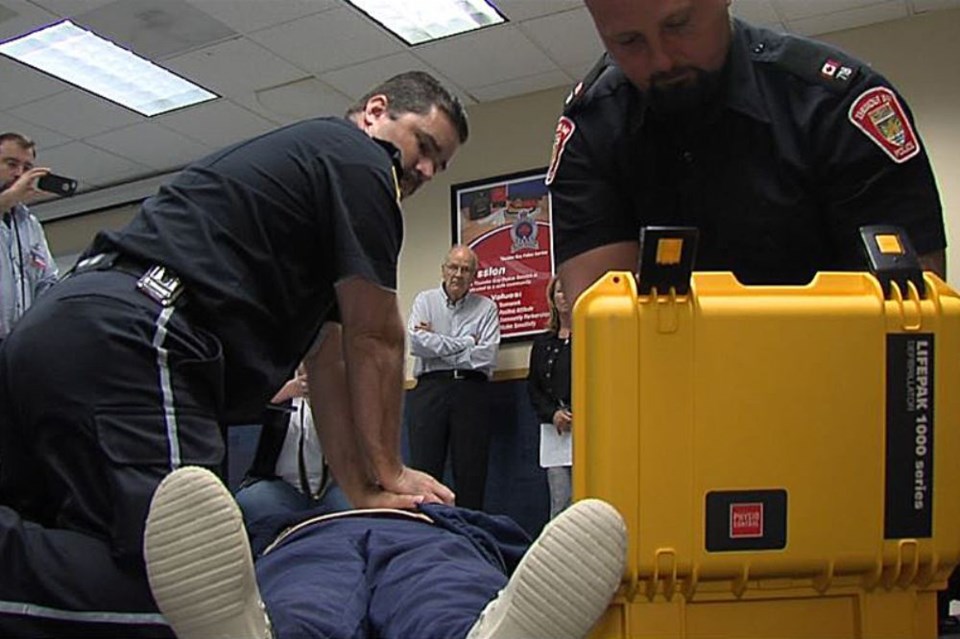THUNDER BAY -- Both of Diane Watson's parents died of heart attacks; her mother in the hospital, her father at home.
"Unfortunately, I didn't know CPR," she recalled. "If I did or if there was a defibrillator handy, I might have saved his life."
To that end, she and her husband Ron were proud to donate $16,000 to the Thunder Bay Police Service on Tuesday, which will fund defibrillators in six police cruisers.
"There are a lot of people that are elderly in this community and if lives can be saved... that's wonderful," she said.
The devices have audio cues that walk would-be lifesavers through the emergency situation, including prompts for when to use paddles to stimulate the heartbeat. The police's goal is to have all officers trained on use of the equipment, which are also known as AEDs.
On Tuesday, the police service received six new units that could be placed in their cruisers. The donation came from a local couple.
Medical director for the police defibrillation program, Andrew Affleck said when emergency services introduced tiered response system 20 years ago, the practice of having police, fire and ambulance services on every call doubled the survival rate in Thunder Bay, from 3.5 per cent to seven per cent.
"In the end, with our data, it shows police will get there sooner in some situations because of deployment than either ambulance or fire and getting there earlier will save lives," he said.
If police arrive first on scene of a cardiac arrest, they would administer the AED, then hand over leadership over the patient to fire and then paramedics, accordingly.
Superior North EMS chief, Norm Gale said the 120 annual calls where seconds matter in a cardiac arrest constitute less than two per cent of his service's overall call volume. But in the rare and ideal conditions where CPR is administered and 9-1-1 is called right away, patients can have as much as a 40 per cent chance of survival.
"There's science and good evidence to show that in cases of sudden cardiac arrest, early CPR by anyone and early defibrillation by anyone will save lives," he said.
"These are skills a layperson can learn simply by taking a CPR course. Having said that, with three primary first response agencies -- police, fire and EMS -- having all three with these tools will result in lives saved."
(With files from TBT News)
